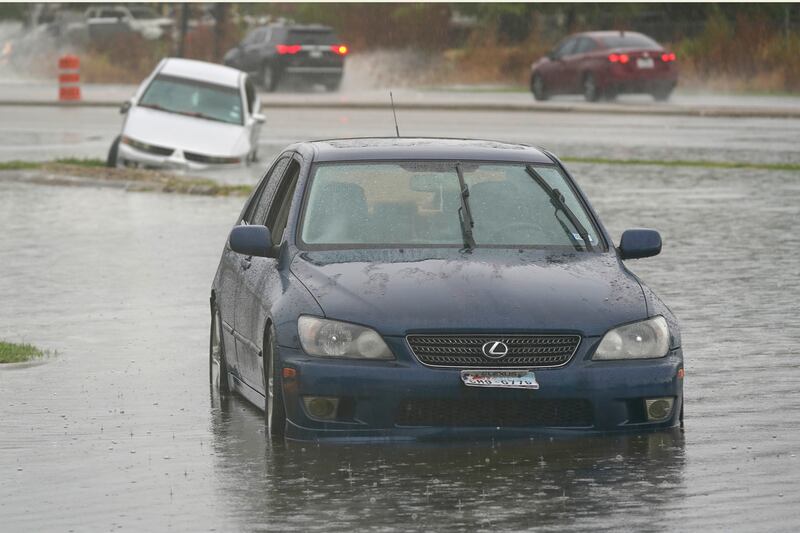Sunday sported flash flooding and mudslides in the Southwest this past weekend, as the effects of the North American Monsoon season trickle farther into the United States. The Dallas-Fort Worth area is nearing record rainfall for the month of August, while I-70 near Glenwood Springs in Colorado was shut down due to flooding and a hiker in Utah’s Zion National Park is missing after heavy rain storms in the area.
This intense, wet weather is caused by the North American Monsoon, the seasonal climate phenomenon from July to September that greatly impacts the Southwest region of the United States. While the word “monsoon” may bring to mind heavy wind and rain, this kind of weather is more than just your average rain shower.
According to the National Oceanic and Atmospheric Administration, the North American Monsoon occurs when there is a drastic change in the direction of winds during a season. Intense dry winds and wet winds meet, causing bouts of rainy days followed closely by dry spells. Whether the monsoon results in drier or wetter weather varies by year — 2020 had one of the driest North American Monsoons to date — but it’s clear to see the Southwestern U.S. is in for a rainy season this year.
Huge amounts of rainfall turned “streets into rivers of water,” NBC reported, as the Lone Star State was covered in 7.8 inches of rain in just three hours. With 10 inches of rain so far for the month of August, Texans’ cars were submerged on the I-30 freeway on Sunday. The National Weather Service issued a flood watch until 8 p.m. Monday, and The Texas Tribune reports that the Dallas Fire Department alone has responded to hundreds of calls for “water-related emergencies” since Sunday evening.
The Texas Division of Emergency Management has reminded Texas residents on Twitter to avoid walking or driving through flooded roadways, using the hashtag currently being used by Texans all across the state, “#TurnAroundDontDrown.”
Farther north, Coloradans are dealing with downpours, as well. The I-70 was blocked off near Glenwood Springs on Sunday, as the bursts of heavy showers resulted in flash flooding in the Grizzly Creek Fire burn scar and Glenwood Canyon areas, according to CBS. Drivers on the interstate were sent back in the direction they came from, and the road wasn’t properly cleared until later that day.
While the roads were cleared on Sunday, Colorado still had leftover damage from the storms. The Grizzly Creek Fire burn scar and Glenwood Canyon area had massive mudslides, The Denver Post reported. While several areas in the Rocky Mountains are prone to mudslides, the 2020 Grizzly Creek fire burned away the trees and shrubs that often help slow the mudslides if not to a halt, then to a snail’s pace.
But before the mudslides rushed through Colorado, floodwaters rushed through the state and neighboring Utah. 29-year-old Jetal Agnihotri of Tucson, Arizona, was reported missing on Friday when floodwaters in Zion National Park swept her and several hikers off their feet. The rest of the hikers were able to take refuge on high ground, though stranded until the flooding subsides. Agnihotri had attempted to wade through the Virgin River despite the flash flood warnings, Dailymail reported, and when she didn’t meet up with her friends at the visitor’s center parking lot, her fellow hikers called for help.
National Park Service officials said to media outlets that park rangers and Zion Search and Rescue Team members were searching the Virgin River area Sunday to find Agnihotri, though only her backpack has been recovered at this time. Her brother has since shared a video with KSL-TV of the river sweeping away another hiker, who was reportedly swept away not long after Agnihotri.
Zion National Park has since closed off several areas of the park for search and rescue operations, including Riverside Walk and the Narrows — the area of the park Agnihotri was attempting to reach on her own. The National Park Service wrote that more than 20 park rangers and Zion Search and Rescue Team members were searching on the Virgin River via flotation devices and ropes, ready to pull hikers from the water. While multiple hikers have been located and escorted to safety this weekend, Agnihotri still has not been found.

